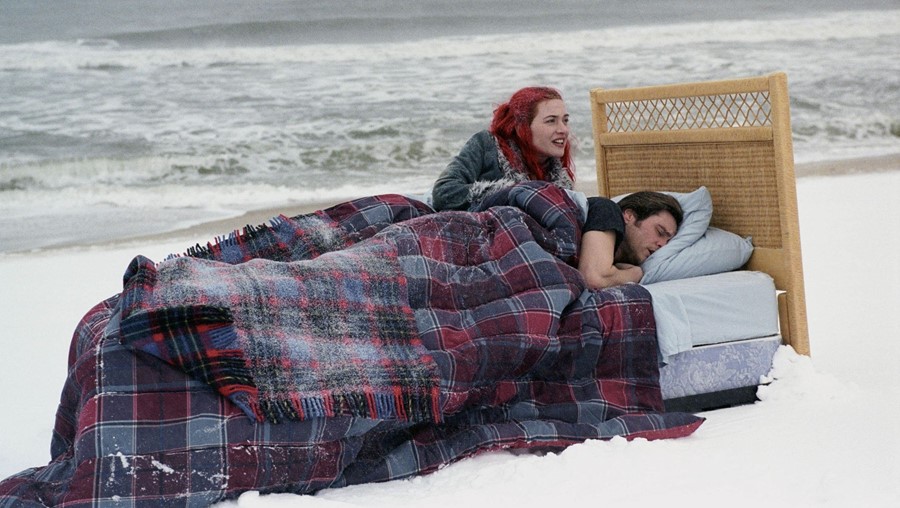From VR headsets to guided meditations, sleep tourism is fast becoming one of the biggest trends in the wellness industry
For decades, scientists have been trying to tap into the unconscious mind as a means to transcend reality. Some have experimented with mind-altering drugs like weed and psychedelics, while others have turned to methods such as transcendental meditation, hypnosis and hypnagogia. Anyone who’s tripped their brains out on acid will tell you that it’s a very different experience to, say, drifting gently in a floatation tank, but the sorts of altered states they seek to unlock are pretty much the same – the idea being that altering your mind can help to unlock the unconscious, and in doing so, help us to reconfigure our understanding of ourselves and the world around us.
Back in January, I began looking into lucid dreaming as a way to unlock the subconscious after reading about the development of a new device that allows users to control their dreams using AI. The idea that we might be able to soon hack our dreams felt like something out of a sci-fi novel, though not entirely an inconceivable possibility given the rapid development of AI in recent months. Prophetic AI’s Halo has yet to successfully deliver a product, and other companies have also tried to induce lucidity through apps and devices that track REM sleep, though these too don’t come with any guarantees. Then, last month, I received an email about a London hotel unveiling the world’s first AI lucid dreaming experience, so obviously I had to give it a try.
The Kimpton Fitzroy London’s ‘Room to Dream’ experience promises to help guests activate lucid dreaming through the use of a VR headset and a combination of other meditative and relaxation techniques, including a calming tea spiked with mugwort tonic (a herb known for upping your chances of lucid dreaming) and a lavender spray to be spritzed onto the pillows before bed. “So much of lucid dreaming is dependent upon set and setting so the VR combined with the tea and the dream journal all help to prep the mind for lucidity,” says Charlie Morley, the dreaming expert behind the experience. “The tech is designed to prime the mind for lucidity by guiding you into the hypnagogic state consciously. Most of the lucid dream techniques depend upon the ability to enter the hypnagogic consciously so the VR experience helps to teach this.”
Putting the VR headset on, I take a moment to relax into the bed as a Siri-like voice guides me into the meditation. “Welcome to the dream factory,” it says. A myriad of abstract, AI-blurred shapes begin to float across the screen like clouds, the idea being to induce a feeling of weightlessness in the user. I take deep breaths as instructed and sink deeper into the cushions, letting my mind drift idly into a peaceful semi-dreamstate. “You are now entering a hypnagogic state,” it continues.
The experience lasts only five minutes, which is relatively short when you consider the infinitude of dream world, and takes a hybrid approach to lucid dreaming, integrating elements of guided meditation into the virtual reality experience’s peaceful combination of visual and sonic stimuli. Full disclosure, I don’t experience any lucid dreams that night, though the dreams I do experience are particularly vivid. What strikes me most about the experience, however, is the extent wellness experts are tapping into the sleep market – sleep tourism is fast becoming one of the biggest trends in the tourism industry, with companies offering everything from sleeping remedies to weighted blankets and dream tech to increase your chances of a good night’s rest.
Given how digitally mediated our lives are, it’s no surprise that companies are turning to emerging technologies like AI and VR to help induce a smoother dreamstate, though the reason we can’t sleep is partly down to our screen time to begin with. It’s also no coincidence that interest in lucid dreaming, or sleep more generally speaking, has peaked at a time when the digital world is getting trippier and there’s an uptick in people wanting to track their wellbeing using tech – think digital wearables like the Oura ring allows users to track their sleep via an app, or even trends like the TikTok viral sleepy girl mocktail. “Sleep is becoming cool,” says Morley. “The days of ‘sleep when you’re dead’ are over, people want to love their lives at maximum volume and to do that they need to sleep properly.”




